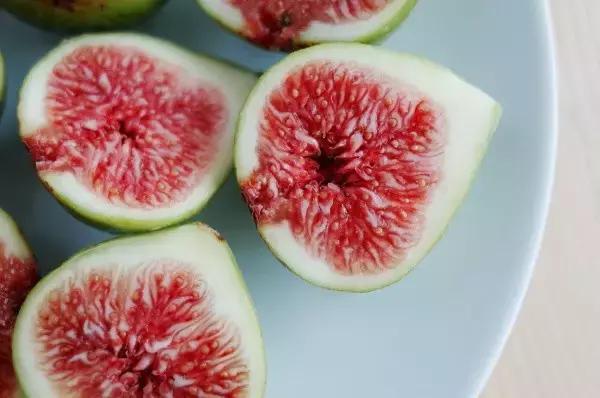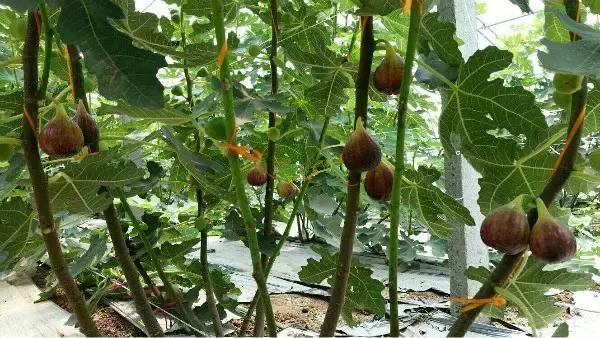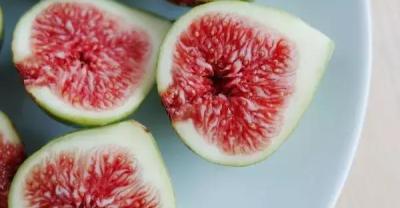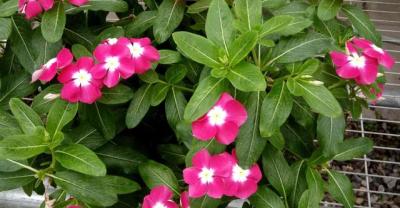Efficient management of fig planting
Whenever the flowers are in full bloom, we can see a colorful scene, but there is a kind of plant that hides the flowers deeply in the "fruit". This plant is the figs that the editor is going to introduce today.
Fig fruit is bulbous, in addition to fresh food, but also can be medicinally or processed into preserved fruit, jam, fruit juice, fruit wine, fruit tea and so on. In addition to the rich economic value of fruit, its fruit tree also has good ornamental value, and it is one of the tree species considered for garden and courtyard greening. Fig trees bear fruit in the same year, which is especially suitable for the development of potted fruit trees, and the economic benefit is also very obvious. at present, it is one of the potted fruit trees with the highest profit margin in China.

So how to plant fig trees in order to achieve high yield and high harvest?
1. Planting site selection
Figs like warm and humid climate, drought-resistant, cold-resistant, barren and waterlogging-resistant. It is appropriate to choose neutral or slightly alkaline soil with high terrain, leeward to the sun, good drainage and good irrigation conditions, deep and fertile soil to plant figs. Fig planting can not be planted in conjunction with peach and mulberry trees, and because figs are not resistant to storage and transportation, the park should be built in the suburbs of the city or in places with convenient transportation.
2. Reproduction
The methods of fig tree propagation are cutting, striping, split and so on, and cutting propagation is more common.
3. Colonization
When the diameter of the seedling reaches 40-60 cm, it can be planted, and the mixed fertilizer containing phosphorus and potassium (farm fertilizer, chemical compound fertilizer, cake fertilizer, etc.) is applied before planting. Generally, the northeast region is planted before and after Grain Rain, the North China region is planted before and after the Qingming Festival, and the south is transplanted and planted after falling leaves in autumn.

4. Shaping and pruning
The shaping and pruning of figs is relatively simple, the main branches are mainly cultivated in the young tree stage, and the multi-branch group is cultivated in the early fruit stage to lay a good foundation for yield, cultivate backbone branches in the full fruit stage, and cut off senile, thin, disease and insect branches.
5. Fertilizer and water management
Fig fertilizer is mainly organic fertilizer, combined with compound fertilizer, topdressing is needed for inflorescence differentiation, shoot growth, fruit harvest and after fruit harvest.
Figs are resistant to drought and waterlogging, and there is a large water demand during the period of shoot growth and fruit expansion, but if the stagnant water is too heavy, it will be easy to drop flowers, fruits and leaves, so if the topography of the park is low, we should pay attention to high ridge cultivation and pay attention to the drainage work in the rainy season.
6. Pest control
There are few diseases and insect pests in fig planting, but they are easily damaged by birds when the fruit is ripe, so it can be driven away by a scarecrow with plastic strips in the field.
- Prev

Cultivation techniques and field management of celery
Celery is nutritious. It is determined that every 100 grams of edible part contains 0.7 grams of protein, 0.1 grams of fat, 5.0 grams of carbohydrates, 37.0 milligrams of calcium and 1 mg of iron.
- Next

Planting techniques of sweet potato
Sweet potato is formerly known as sweet potato, also known as sweet potato, rice, sweet potato, sweet potato (north), red potato, sweet potato, Zhu potato, pillow.
Related
- Fuxing push coffee new agricultural production and marketing class: lack of small-scale processing plants
- Jujube rice field leisure farm deep ploughing Yilan for five years to create a space for organic food and play
- Nongyu Farm-A trial of organic papaya for brave women with advanced technology
- Four points for attention in the prevention and control of diseases and insect pests of edible fungi
- How to add nutrient solution to Edible Fungi
- Is there any good way to control edible fungus mites?
- Open Inoculation Technology of Edible Fungi
- Is there any clever way to use fertilizer for edible fungus in winter?
- What agents are used to kill the pathogens of edible fungi in the mushroom shed?
- Rapid drying of Edible Fungi

